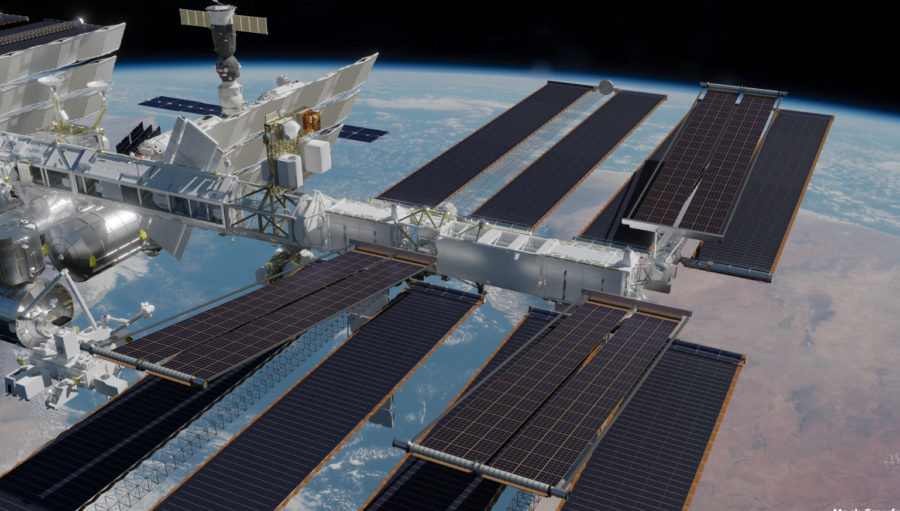Two astronauts aboard the International Space Station (ISS) have begun a spacewalk to continue the process of outfitting the orbiting laboratory with new sets of solar arrays.
US EVA-77 — the first US spacewalk to not involve an American — will see Japan Aerospace Exploration Agency (JAXA) astronaut and current ISS Commander Aki Hoshide and European Space Agency (ESA) astronaut Thomas Pesquet build a support bracket onto which a future solar array will be mounted.
Background
The ISS’s Solar Array Wings (SAWs) produce all the electrical power required by the station.
The first SAW, on the P6 truss, was launched on December 1, 2000 (UTC) on the STS-97 mission of the Space Shuttle Endeavour. In the intervening 21 years, expected degradation of the arrays means they produce less power than they did when they were first deployed.
The remaining SAWs for the ISS were delivered on three Space Shuttle missions: STS-115 in 2006 (P3/P4 truss), STS-117 in 2007 (S3/S4 truss), and STS-119 in 2009 (S6 truss).
The decreasing power ability of the arrays came against a backdrop of increasing demand from the station’s ever-increasing user base.
With a complete removal & replacement of the arrays not possible due to ISS construction and integration, the ISS Power Augmentation program was formed to find a way to boost the station’s power output.
The IROSA is a new type of array technology for the station. Whereas the outpost’s original arrays deployed in an accordion-like manner, the IROSAs roll out in a mat-like fashion from inside a cylindrical canister.
Their solar cells are mounted on a thin flexible blanket rather than traditional rigid panels, and they feature a composite boom that adds rigidity and allows for deployment without the use of motors or complex mechanisms.
This allows the large arrays to be compactly stowed — which is important given the current launch vehicle options available to the ISS program.
The solar cells themselves are around 30% efficient compared to the 14% efficiency of the original arrays. This allows the IROSAs to generate roughly the same power as the originals despite being only half their size.
Although the IROSAs will partly shadow the existing arrays, the originals will continue to generate power alongside the IROSAs.
Each IROSA will produce 20kW of power for a total of 120kW across all six arrays. When added to the output of the original arrays, a combined total of 215kW of power will be available to the ISS, close to its original level.
This represents an increase of nearly a third compared to the outpost’s current 160kW of available power and will ensure the ISS has adequate power to support its increasing demands throughout the remainder of its life.
Two IROSAs are already installed on channels 2B and 4B on the P6 truss, having been launched on a pallet inside a SpaceX Cargo Dragon 2 trunk on the CRS-22 flight in June 2021 and installed via a series of spacewalks.
US EVA-77
US EVA-77 officially began at 08:15 EDT (12:15 UTC) on September 12 when Aki and Thomas took their Extravehicular Mobility Units (EMUs, or spacesuits) to battery power. Read more from NASA





